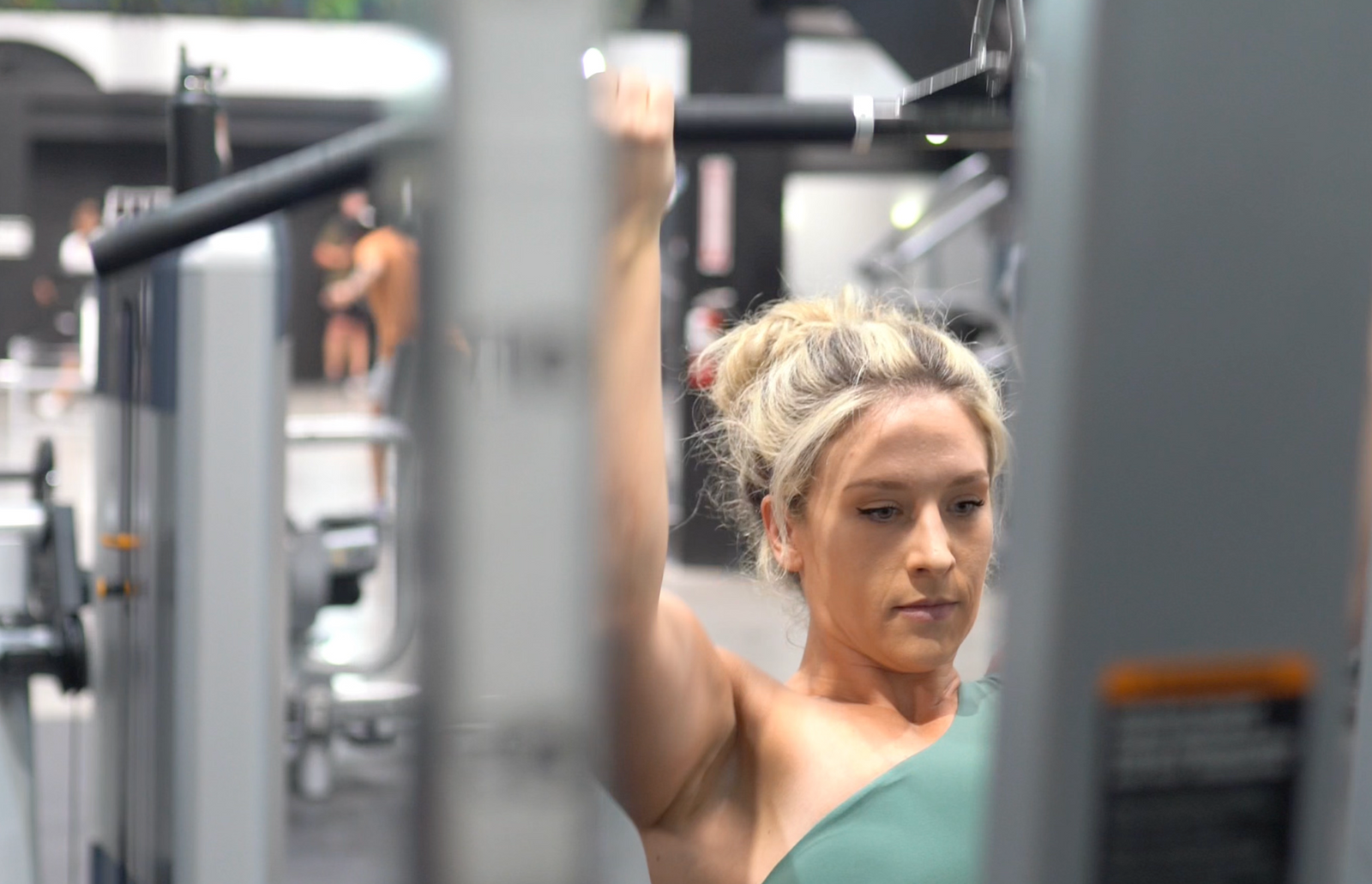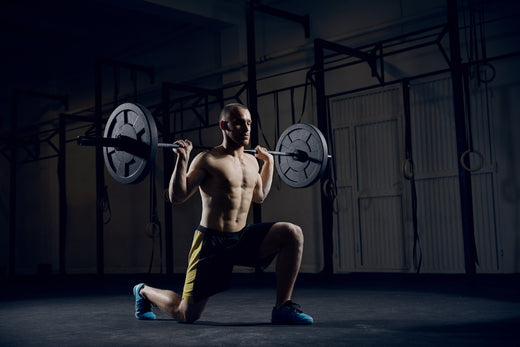The Best Cable Back Exercises for Strength, Symmetry, and Size
A well-developed back is the foundation of upper body power, posture, and aesthetics. And while barbells and dumbbells dominate most programs, cable machines offer unique advantages that can take your back training to the next level. From constant tension to controlled movement paths, cable exercises allow for deeper contractions, better isolation, and improved mind-muscle connection—key factors for both hypertrophy and joint-friendly strength building.
In this guide, we’re breaking down the best cable back exercises you should include in your training program. Whether you're targeting width, thickness, or rear delt definition, these movements cover all angles and muscle groups.
Why Use Cables for Back Training?
Before diving into individual movements, let’s cover why cables deserve a permanent spot in your back-day lineup:
1. Constant Tension
Unlike free weights where resistance varies with gravity, cables provide consistent tension throughout the entire range of motion—leading to better muscle fiber recruitment and more effective hypertrophy.
2. Joint-Friendly Mechanics
Cables allow for natural movement patterns that are less stressful on the joints, especially when compared to barbell rows or heavy deadlifts. This makes cable training ideal for long-term joint health and injury prevention.
3. Enhanced Range and Control
Cables enable you to isolate hard-to-hit muscles (like the lower lats or rear delts) and use strategic angles that maximize contraction without momentum.
“Exercises that maintain consistent resistance across the range of motion—like cable movements—are associated with improved muscular control and activation.” – Schoenfeld et al., Journal of Strength and Conditioning Research
The 6 Best Cable Back Exercises For Gains And A Wider Back
1. Lat Pulldown
The lat pulldown is a compound upper-body pulling exercise performed using a lat pulldown machine with a pronated (overhand) grip, typically wider than shoulder-width. The primary purpose of this movement is to strengthen and develop the latissimus dorsi, helping to increase upper-body width and back strength.
Lat pulldowns are classified as a vertical pulling movement, meaning they train the body to pull resistance downward from above, in contrast to horizontal rowing patterns. The adjustable weight stack makes it beginner-friendly, while the consistent resistance from the cable system allows for focused hypertrophy training.
How to do Lat Pull Down
-
Sit at the lat pulldown machine and secure your legs under the pad.
-
Grasp the bar with a wide overhand grip (1.5x shoulder-width).
-
Sit tall with a slight lean back, chest up.
-
Pull the bar down to your upper chest, driving your elbows down and in.
-
Squeeze your lats at the bottom.
-
Slowly return to the top for a full stretch.
"The lat pulldown closely mimics the mechanics of the pull-up, providing a scalable way to improve vertical pulling strength." – Lehman et al., JSCR
Benefits:
-
Increases upper body pulling strength
-
Builds the iconic V-taper
-
Beginner-friendly alternative to pull-ups
Muscles Worked:
-
Latissimus dorsi
-
Teres major
-
Rhomboids
-
Lower trapezius
-
Biceps
2. Reverse-Grip Lat Pull down
The reverse grip lat pulldown is a compound pulling exercise performed on a lat pulldown machine using a supinated (underhand) grip, with the hands typically placed shoulder-width or slightly narrower. This setup changes the path of motion compared to traditional lat pulldowns, allowing for a deeper stretch and stronger contraction in the latissimus dorsi, particularly the lower fibers.
Because of the underhand grip, the movement also recruits the biceps brachii, brachialis, posterior deltoids, and rhomboids to a greater extent, making it not just a back builder but also a functional movement to strengthen the arms and improve posture.
How To Do Reverse Grip Lat Pull Down
-
Attach a wide bar to the lat pulldown machine.
-
Grip the bar underhand shoulder-width with an underhand grip.
-
Sit upright, engage your core, and lean slightly back.
-
Pull the bar to the top of your chest by driving elbows out and down.
-
Squeeze your upper back, then control the return.
Benefits:
-
Greater upper lat and rear delt engagement
-
Improved posture and scapular control
-
Enhances shoulder girdle strength
Form Tip:
Grip the bar shoulder-width with an underhand grip. Keep your torso tall and pull toward your upper chest, focusing on squeezing the upper back at the bottom.
3. Close-Grip Lat Pulldown
The close-grip lat pulldown is a vertical pulling exercise performed on a cable pulldown machine using a neutral grip (palms facing each other) or narrow overhand grip, typically with a V-bar or close-grip handle. By narrowing your grip, you change the line of pull, which places greater emphasis on the lower portion of the latissimus dorsi, rhomboids, teres major, and biceps.
Unlike the wide-grip version, which prioritizes width and upper back, the close-grip variation favors lat thickness, helping you build that deep, muscular middle back. It also allows for a stronger contraction at the bottom of the movement and can feel more natural on the shoulders and wrists—especially for lifters with limited mobility.
“Grip width significantly influences muscle activation during lat pulldowns, with narrow grips increasing biceps and lower lat activation.” – Lusk et al., Journal of Strength and Conditioning Research
How to Close Grip Lat Pull Down
-
Sit at the pulldown machine and use a close-grip V-bar.
-
Grip the handles with a neutral (palms-facing) grip.
-
Lean slightly back with a tall chest and tight core.
-
Pull the bar to your upper chest, elbows close to your body.
-
Pause and squeeze the lats, then return slowly.
The close-grip pulldown is perfect for developing lat thickness, lower lats, and biceps strength due to the more compact, elbow-tucked angle.
Benefits:
-
Emphasizes lower lats and arm involvement
-
Stronger peak contraction
-
Joint-friendly for wrists and shoulders
Muscles Worked:
-
Lower latissimus dorsi
-
Teres major
-
Rhomboids
-
Biceps and brachialis
“Narrow grips increase biceps and lower lat activation, offering a balanced approach to vertical pulling.” – Lusk et al., JSCR
4. Face Pulls
The face pull is a highly effective isolation movement targeting the rear delts, upper traps, and rotator cuff—areas that are often undertrained yet critical for posture and shoulder health. Face pulls help target multiple muscle groups in the upper back, most notably the rear deltoids and latissimus dorsi. Face pulls are an amazing accessory workout, to help square the shoulders and pull them back, which helps develop a more natural posture.
How To Do Face Pulls
-
Attach a rope to a high pulley on a cable machine.
-
Stand facing the machine, holding the rope with a neutral grip.
-
Step back slightly with feet shoulder-width apart.
-
Pull the rope toward your forehead, rotating the shoulders outward.
-
Squeeze rear delts and traps at peak, then return under control.
Benefits:
-
Improves posture and scapular stability
-
Strengthens rear delts and external rotators
-
Helps correct imbalances from pressing
Form Tip:
Use a rope attachment, set the pulley at face height, and pull the rope toward your forehead, externally rotating your shoulders as you contract.
5. Rear Delt Cable Fly
The rear delt cable fly is an isolation exercise that targets the posterior (rear) deltoid, which is the back portion of the shoulder. Performed on a cable crossover machine, it involves pulling the arms outward and slightly backward in a wide arc, using a lightweight load to create continuous resistance across the entire movement.
Unlike dumbbell reverse flys, the cable variation provides constant tension, allowing for more precise control and a longer time under tension—both of which are essential for muscle hypertrophy and joint-friendly training.
Benefits:
-
Isolates the rear delts more effectively than dumbbells
-
Enhances posture and balances shoulder aesthetics
-
Improves shoulder stability in pulling and pressing movements
How to Do the Rear Delt Cable Fly (Step-by-Step)
-
Set Up: Adjust both pulleys to shoulder height. Stand centered between them.
-
Grip: Grab the left cable handle with your right hand and the right cable with your left (crossed arms).
-
Position: Step slightly forward and hinge at the hips, keeping a flat back and neutral spine.
-
Execution: With a slight bend in your elbows, pull the cables outward and slightly backward in a wide arc.
-
Squeeze: At the top of the motion, pause and squeeze the rear delts.
-
Return: Slowly return to the starting position under control, keeping tension throughout.
Perform 3–4 sets of 12–15 reps using a light to moderate weight with full range of motion.
Stand in the center of a dual cable machine. With cables crossed, pull outward and slightly backward in a fly-like motion, keeping a slight bend in your elbows.
“Rear delt training is essential for balanced shoulder development and upper body injury prevention.” – Boettcher et al., Clinical Biomechanics
How to Program Cable Back Exercises
Cable movements can be used as:
-
Primary lifts (e.g., lat pulldown early in the session)
-
Accessory movements (e.g., rear delt flys or face pulls)
-
Finishers for fatigue and volume
| Goal | Sets | Reps | Rest |
|---|---|---|---|
| Hypertrophy | 3–4 | 10–15 | 45–90 sec |
| Strength | 4–5 | 6–10 | 90–120 sec |
| Endurance | 2–3 | 15–20 | 30–60 sec |
Pro Tip:
Pair vertical pulls (lat pulldowns) with horizontal isolation (face pulls, cable rows) to fully activate the entire back musculature.
Sample Cable Back Day
1. Wide-Grip Lat Pulldown – 4 sets x 8–12
2. Close-Grip Lat Pulldown – 3 sets x 10–12
3. Face Pulls – 3 sets x 15
4. Rear Delt Cable Fly – 3 sets x 15–20
5. Cable Straight-Arm Pulldown (Optional) – 3 sets x 12–15
Final Thoughts: Why Cables Belong in Every Back Workout
Cable machines offer unmatched versatility and tension for back training. From building thickness and width to improving shoulder health and posture, the best cable back exercises provide a joint-friendly, highly effective way to level up your physique and performance.
By strategically combining foundational vertical pulls like the lat pulldown, close-grip, and wide-grip pulldown with targeted isolation moves like face pulls and rear delt flys, you’ll train your entire back with intention, balance, and precision.
Don’t underestimate the power of cables—program them with purpose, and you’ll feel (and see) the difference.
Need Help With Optimizing Your Diet And Nutrition Plan To Finally Get The Results You've Been Waiting For?
SWOLVERINE IS AN ENDURANCE ATHLETE AND ACTIVE LIFESTYLE BRAND. MADE FOR THE ELITE ATHLETE, AND THE STRONG-WILLED OUR PRODUCTS WERE DESIGNED TO FUEL YOUR ATHLETIC PERFORMANCE. WE PERFORM WHEN YOU PERFORM.
We believe that everyone can optimize not only their athletic performance but their human potential. The way we believe we can optimize performance is through transparency, clinically effective doses, and clinically proven ingredients with evidence-based outcomes. We provide the nutrients you need to power your active lifestyle.








